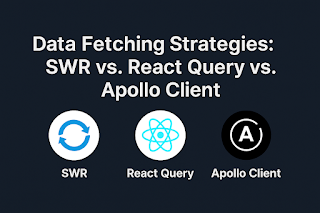Deploying Front-End Applications: Vercel vs. Netlify vs. Cloudflare
In the modern web development landscape, deploying front-end applications has never been easier — or more complex. With powerful platforms like Vercel, Netlify, and Cloudflare, developers have a variety of tools at their fingertips to push apps live in minutes.
But which one should you choose? Let's break down the strengths, weaknesses, and unique features of each to help you make the best decision.
1. Vercel
Best For: Next.js apps and real-time collaboration.
Key Features:
- Deep integration with Next.js (created by the same team)
- Serverless Functions and Edge Middleware
- Easy Git integration (GitHub, GitLab, Bitbucket)
- Instant rollback and previews with every commit
- Optimized for performance and dynamic routing
Pros:
- Blazing-fast deployment for Jamstack & SSR
- Best-in-class developer experience
- Strong preview environment for teams
Cons:
- Free tier has some function execution limits
- Less customizable for non-Next.js projects
2. Netlify
Best For: General Jamstack apps, static sites, and flexible CI/CD.
Key Features:
- Built-in continuous deployment from Git
- Support for a wide range of frameworks (React, Vue, Svelte, etc.)
- Netlify Functions for backend logic
- Plugins ecosystem for extended functionality
- Split testing, forms, and Identity management
Pros:
- Generous free tier
- Great documentation and developer community
- Flexibility with framework and build tools
Cons:
- Slightly slower build times than Vercel for SSR apps
- Edge Functions in beta/early stages compared to others
3. Cloudflare Pages
Best For: High-speed static sites and performance-driven apps.
Key Features:
- Ultra-fast global CDN
- Native support for Deno and Cloudflare Workers
- Git integration with instant deploys
- Free SSL, custom domains, and automatic scaling
- Pages Functions for backend logic (similar to serverless)
Pros:
- Fastest edge network delivery
- Excellent for static-first or dynamic-with-Workers use cases
- Totally free for most use cases
Cons:
- Slightly steeper learning curve for Workers
- Less intuitive UI/UX than Vercel or Netlify
Comparison Table

Final Thoughts
Choosing the right platform comes down to your project’s needs:
- Use Vercel if you're building with Next.js and want tight integration with minimal config.
- Choose Netlify for flexibility and a wide range of built-in features like forms, identity, and A/B testing.
- Go with Cloudflare Pages if performance is paramount and you're ready to leverage edge-first capabilities.
Ultimately, these platforms are all powerful, modern, and developer-friendly — and you really can’t go wrong. Try them out, experiment with deployment pipelines, and pick the one that fits your workflow best.
#FrontendDevelopment #Vercel #Netlify #Cloudflare #Jamstack #WebPerformance #WebDeployment #DeveloperTools #DevOps #ModernWeb




Comments
Post a Comment